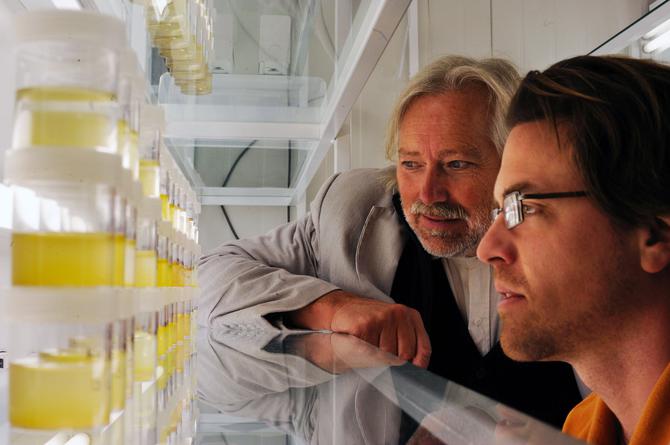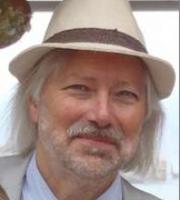In the time it takes to read this sentence, you will almost certainly have inhaled oxygen disgorged by algae.
Tiny ocean-borne algae played a critical role in creating the atmospheric conditions on Earth and produce half the oxygen we breathe today.
Algae multiply frighteningly quickly, sometimes up to 10 times a day. When algae blooms occur around Australia or around the world, there is a good chance that Professor Gustaaf Hallegraeff’s phone will start to ring.
Since Professor Hallegraeff (Professor in Aquatic Botany, Institute for Marine and Antarctic Studies) won international attention and a Eureka Prize for demonstrating that harmful algae were being transported around the world in ships’ ballast water, and has become the go-to man every time someone spots an algal bloom.
A lot of people never considered that ships’ ballast water would transport harmful pathogens, but when shellfish in Tasmania were contaminated by some algae not normally found on our coast, we tracked the cause, Professor Hallegraeff said.

Professor Gustaaf Hallegraeff with Dr Marius Mueller.
The existence of blooming algae has been known for centuries. In the 1890s, reports already noted an algal bloom in Sydney Harbour which gave the affected water a tomato-soup-like appearance and killed fish and shellfish.
Professor Hallegraeff had known his scientific destiny since the age of seven, when an uncle’s gift of a toy microscope enabled him to study droplets of water from a rainwater tank; so when he immigrated to Sydney from the Netherlands, 120 years after the first recorded algae reports, he was hardly surprised by the evidence of algal action around him.
After three decades examining the small, simple plants that many others ignored, he has become one of the world’s leading authorities on algae and their impacts on the environment. After algal blooms contaminated shellfish harvested from Tasmania’s East Coast in 2012, the global recall of exports cost Tasmania $23 million – and temporarily damaged the state’s iconic food brand.
As a result, Professor Hallegraeff is leading the development of a toxin test kit – a little like a human pregnancy test kit – which will allow shellfish farmers to pick up a shellfish,test it for toxins and get a reliable diagnosis almost instantly of toxin levels.
The $600,000 project, funded by the fishing industry, has already spawned a prototype, with hopes that shellfish farmers will have a new test tool in use at their farm sites within 12 months.
Further afield, Professor Hallegraeff has been asked by UNESCO to chair an international committee to predict the impacts of climate change on harmful algal blooms and seafood security.
With the world’s population growing so quickly, seafood security is critically important to ensure people have enough to eat in future.
“The future of algae is inextricably tied to the future of the rest of us.”
Start your research journey. Apply now to begin a research degree.
